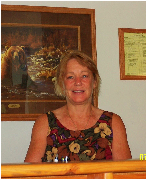No doubt you know the story of the Pacific waters salmon and their fight to return to their home to lay the eggs of the next generation. Having been born and brought up in the Northwest, I knew the tale, but no one taught me the wonderment of the reality. It was more like a geography lesson, or, reading and memorizing the dates and times in a history book. Then, one of my daughters decided to go back to college a few years ago. Her degree is in environmental science, with a minor in marine biology. I began to hear a great deal about the salmon, and became vitally interested in Oncorhynchus, the formal name for Pacific Coast salmon.
Hearing this particular, "fish story," is an experience. I have never tired of it or lost the joy it gives me. Most of all, it filled me with a permanent sense of wonder that never lessens no matter how many times I think of the wonder of, "how?" Because nothing about the process seems logical.
Pick a day in November, and an iridescent, leaf-shadowed stream twisting and splashing through an icy Northwest forest. There are plenty to choose from. Next look for a quiet pool with a goodly supply of gravel. Look very closely. Maybe we should pretend you have a magnifying glass. See those hundreds of just-hatched salmon eggs? They are on thir own; the parents long dead, and yet, they have taken the first step toward maturity, and are now tiny larvae called alevin. Even from the beginning they must struggle, and their odds are not good. Only about 20 out of a hundred will live to the next stage.
Once the alevin have emerged from their gravel birth they must find habitat that will provide food and a modicum of protecftion. Too many times, because humans hae stripped away vegetation of diverted a stream or dredging has been done, the salmon's rearing habitat is destroyed and he will die before ever maturing.
The larvae that make it through this part of the process emerge as miniscule fish approximately one and a half inches long. Most birds and larger fish are intent on a salmon lunch and the tiny "fry" must pass through a barrage of lethal attempts. Over the months, the little fellows have grown a whopping four inches. Somehow a few have made it through and are now heading down stream to a sort of decompression chamber, or, estuary. An estuary is between a body of salt water and a fresh water lake, stream, or river. The meeting and mixing of the two waters form an estuary. The salmon could not fulfill their destiny without this calm, food-filled haven. It is here that they will spend days, or, weeks feeding and adjusting their body chemistry to the salt water environment.
Next step...bon voyage,
Subscribe to:
Post Comments (Atom)








No comments:
Post a Comment